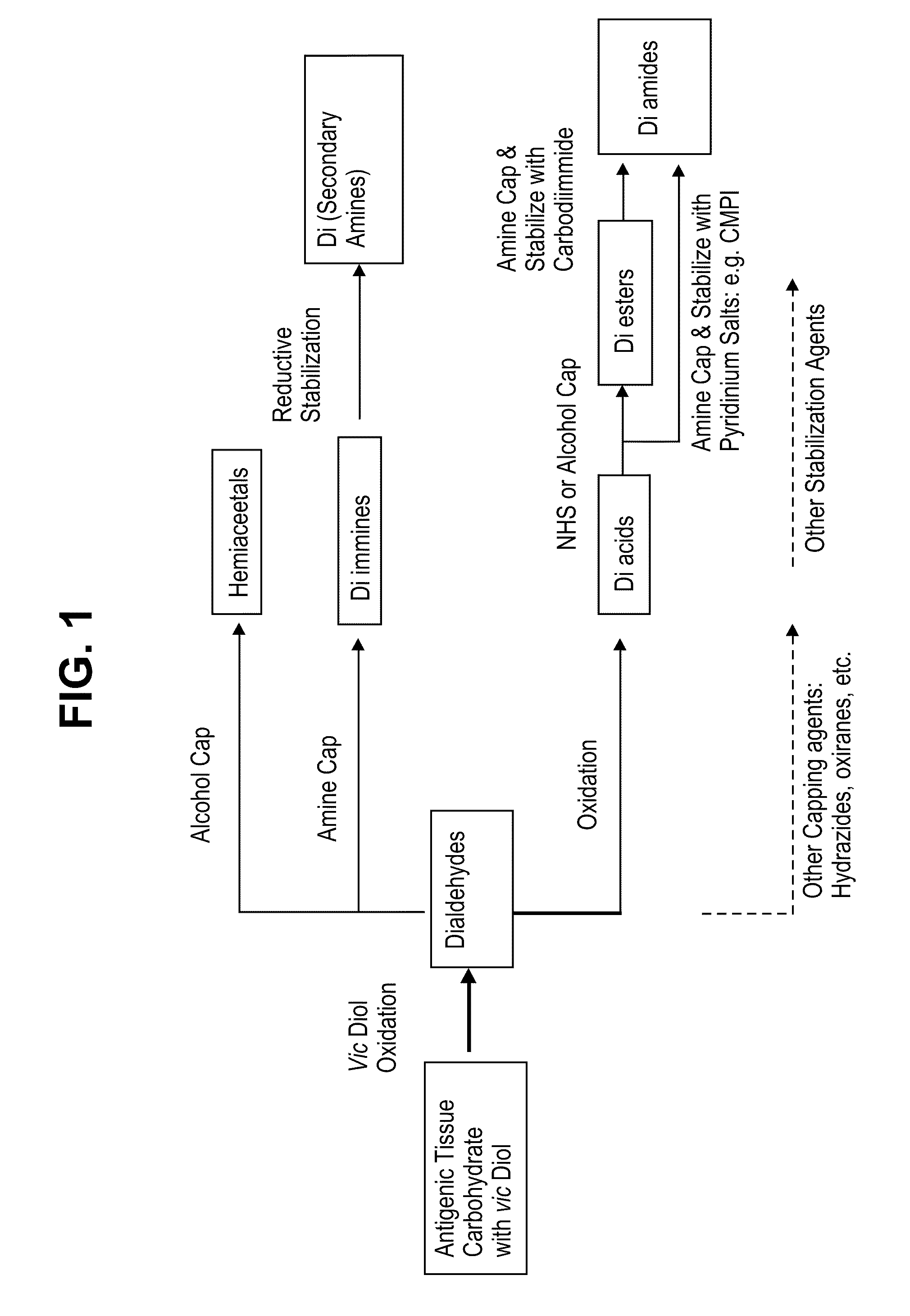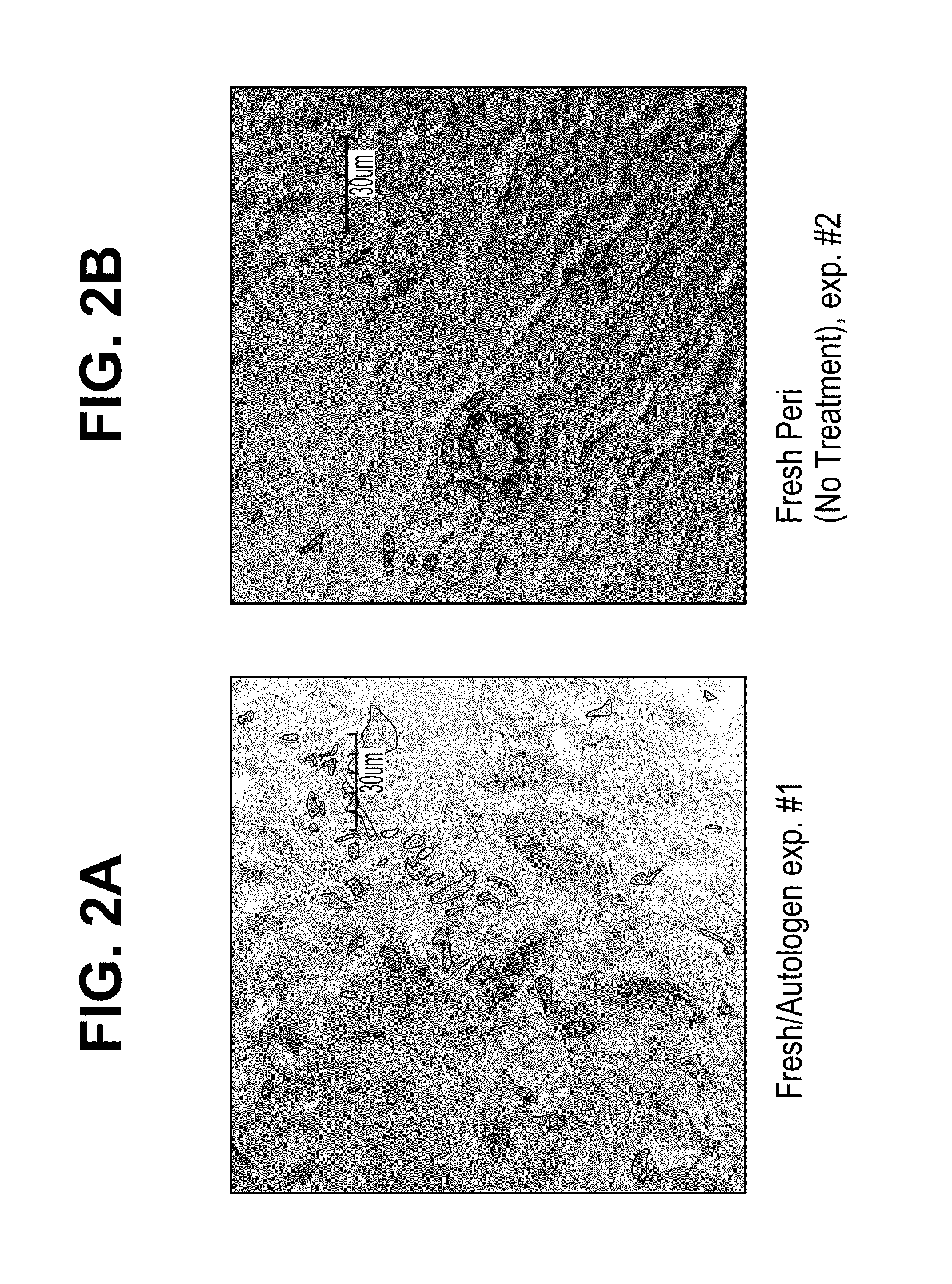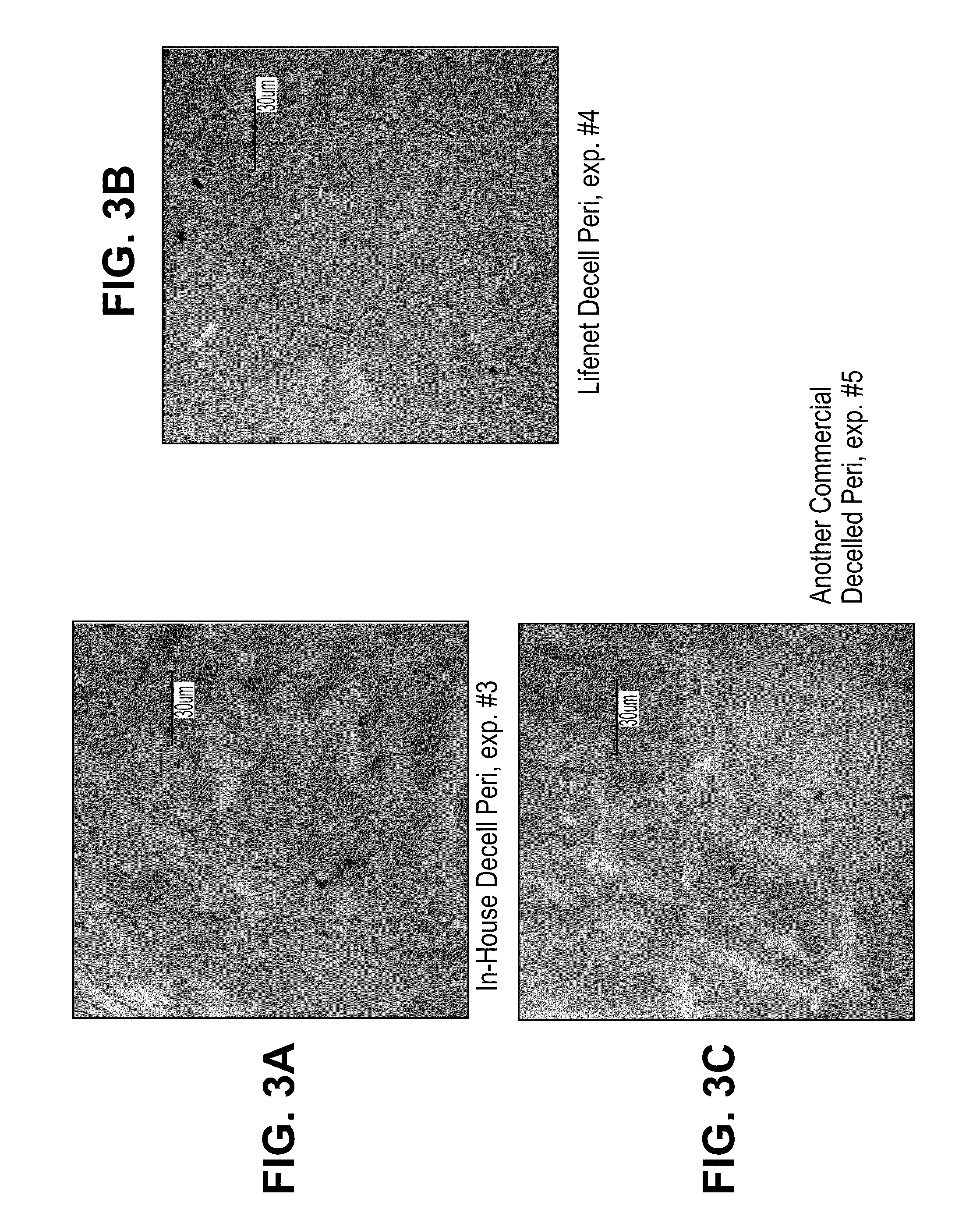Methods for stabilizing a bioprosthetic tissue by chemical modification of antigenic carbohydrates
a bioprosthetic tissue and antigenic carbohydrate technology, applied in the field of bioprosthetic implants, can solve the problems of limiting the antigenicity of bioprosthetic tissues, affecting the stability of bioprosthetic tissues, so as to improve stability, durability, and/or performance
- Summary
- Abstract
- Description
- Claims
- Application Information
AI Technical Summary
Benefits of technology
Problems solved by technology
Method used
Image
Examples
example 1
Tissue Pre-Treatment
[0123]Prior to chemically modifying the antigenic carbohydrates in a xenographic bioprosthetic tissue, the tissue may optionally be pre-treated by exposure to cross-linking agents and / or surfactants. The following non-limiting procedure sets forth one potential tissue pre-treatment protocol that produces fixed tissues. Those skilled in the art will appreciate that various alternative methods, chemical compounds, or solutions may be substituted for those indicated.
Step 1: Harvest / Prepare Biological Tissue
[0124]A desired biological tissue is harvested (surgically removed or cut away from a host animal) at a slaughterhouse, placed on ice, and transported to the location at which the bioprosthesis will be manufactured. Thereafter, the tissue is typically trimmed and washed with a suitable washing solution, such as a saline solution, sterile water, or a basic salt solution. For example, harvested tissues can be rinsed, washed, and / or stored in a phosphate or non-phosp...
example 2
Selective Chemical Modification of Antigenic Carbohydrates
[0129]Chemical modification of antigenic carbohydrates in a xenographic bioprosthetic tissue, as described herein, may be performed whether or not the tissue is pre-treated. The following non-limiting procedure sets forth methods for chemically modifying select antigenic carbohydrates in either scenario.
[0130]After the bioprosthetic tissue has been rinsed and stored, the tissue is preferably immersed in isotonic buffered saline solution containing a periodate oxidizing agent, such as sodium periodate, at a concentration of about 20 mM for a period of about 20 minutes at room temperature with constant agitation.
[0131]After treatment with the periodate oxidizing agent, the tissue is rinsed extensively in 20% ethanol to completely remove the periodate, preferably in a vessel allowing a large solution to tissue volume ratio to create a favorable gradient for solute diffusion.
[0132]The tissue is then immersed in a solution contain...
example 3
Treatment of Un-Fixed Tissue with Periodate
Tissue Treatment
[0134]Bovine pericardial tissue (National Beef, Item # 192769001, WO# 58745266) was treated to mask antigens by the following procedure. Tissue was soaked in a phosphate buffer containing 10 mM ethanolamine (Alfa Aesar, #36260) with pH 7.0±0.5 or 10 mM taurine with 7.0±0.5 pH (Sigma, #T0625). In both treatment groups, sodium periodate (Sigma, #311448) was added to yield a 20 mM solution with 7.0±0.5 pH. Tissue from the two groups was incubated in one of three ways: 1) shaking at 4° C. for 18 hours (New Brunswick Scientific, Innova 4230, refrigerated incubator / shaker) 2) shaking at room temperature for 3 hours (VWR, Model 1000, orbital shaker) and 3) shaking at 37° C. for 30 min. (VWR, Model 1570, orbital shaker / incubator). After treatment the tissue was rinsed thoroughly in 0.9% saline (Baxter, #2F7124). The tissue was then incubated in ethanolamine and sodium borohydride (Sigma, #452882) for 1 hour at room temperature while...
PUM
| Property | Measurement | Unit |
|---|---|---|
| time | aaaaa | aaaaa |
| temperature | aaaaa | aaaaa |
| temperature | aaaaa | aaaaa |
Abstract
Description
Claims
Application Information
 Login to View More
Login to View More - R&D
- Intellectual Property
- Life Sciences
- Materials
- Tech Scout
- Unparalleled Data Quality
- Higher Quality Content
- 60% Fewer Hallucinations
Browse by: Latest US Patents, China's latest patents, Technical Efficacy Thesaurus, Application Domain, Technology Topic, Popular Technical Reports.
© 2025 PatSnap. All rights reserved.Legal|Privacy policy|Modern Slavery Act Transparency Statement|Sitemap|About US| Contact US: help@patsnap.com



